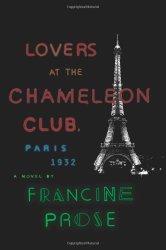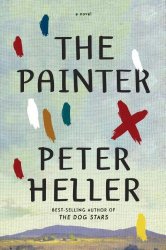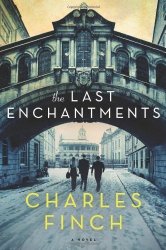
Welcome to Candlelight Books, a collection of book reviews of recently published books that catch my fancy and other book-related topics. Like most writers, I love to read. I love going to the local public library every week. I also love used books stores and buying used books – they seem to have much more character and personality then the bestsellers fresh off the press in their slick, eye-catching dust jackets. My poetry blog can found at PoeticMeditation.wordpress.com.
This book was printed last year, but it’s such a great read I thought I’d go ahead and publish this review I wrote when I first read it. Speaking of used bookshops in the last thread, I found a wonderful one when on vacation in Galveston, Texas with the no-nonsense name: Galveston Bookshop. It’s located off the Strand on 317 23rd, Galveston, Tx 77550. They’re online with Amazon.com. Established in 1991, they carry a wide variety of used books and LP vinyls. The last hurricane flooded the store with seven feet of water. Sitting next to the register is Gus, the “resident shop cat abd customer relations specialist” since 2002. If you happen to be in Galvestion, it’s definitely worth a visit.
Edward O. Wilson, Letters to a Young Scientist, Liveright Publishing Corporation, New York, Ny, 2013.
Sometimes in life, there comes along the right book, read at the right moment, at the right age that can have a profound, life-changing influence on one’s life. I suspect Pulitzer Prize winner, Edward O. Wilson’s Letters to a Young Scientist may be one of those books that will have a profound influence on anyone contemplating a career in science.
In the literary tradition of Ranier Maria Rilke’s Letters to a Young Poet, Wilson has composed twenty letters, not to a young poet, but to a young scientist. He touches on this connection between poetry and science when he writes: “The ideal scientist thinks like a poet and only later works like a bookkeeper.” (p. 74).
Drawing from the deep well of personal experience and wisdom gained from sixty years as a researcher and professor at Harvard University, Wilson’s letters are divided into five categories: the path to follow, the creative process, a life in science, theory and the big picture, and ethics. He states the purpose of these letters in the prologue:
“The introduction to science and scientific careers that I will give you in this series of letters is not traditional in form or tone. I mean it to be as personal as possible, using my experiences in research and teaching to provide a realistic image of the challenges and rewards you can expect as you pass through a life in science.” (p. 17).
True to his word, he dispenses down-to-earth, homespun, practical advice and personal anecdotes from his days as a Boy Scout with a scientific interest in snakes, on through high school where he makes the fateful decision to specialize in ants, and from his productive and fruitful years as an entomologist. His advice for choosing which path to follow: “The subject for you, as in any true love, is one in which you are interested and that stirs passion and promises pleasure from a lifetime of devotion.” (p. 52)
Along the way, Wilson gives the young scientist five principles to guide his scientific career by:
Principle #1: Put passion ahead of training. (p. 25)
Principle #2: For every scientist, whether researcher, technologist, or teacher, of whatever competence in mathematics, there exists a discipline in science for which that level of mathematical competence is enough to achieve excellence. (p. 41).
Principle #3: March away from the sound of the guns. Observe the fray from a distance, and while you are at it, consider making your own fray. (p. 46)
Principle #4: In the search for scientific discoveries, every problem is an opportunity. The more difficult the problem, the greater the likely importance of is solution. (p. 47)
Principle #5: For every problem in a given discipline of science, there exists a species or other entity or phenomenon ideal for its solution. (Example: a kind of mollusk, the sea hare, Aplysia, proved ideal for exploring the cellular base of memory.)
Conversely, for every species or other entity or phenomenon, there exist important problems for the solution of which it is ideally suited. (Example: bats were logical for the discovery of sonar.) (p. 48).
For those who feel they may be lacking in math skills or an understanding in theory, take heart, for Wilson gives this encouraging advice: “Before telling you how the goal was accomplished, I will pause to reinforce a point I made earlier: that successful research doesn’t depend on mathematical skill, or even deep understanding of theory. It depends to a large degree on choosing an important problem and finding a way to solve it, even if imperfectly at first. Very often ambition and entrepreneurial drive, in combination, beat brilliance.” (p. 231).
Passion, perseverance and an insatiable desire to discover the truth about the natural world are three key qualities to being a scientist, three qualities that I found in Wilson while reading his book.
The final letter addresses the importance of scientific ethic. This ethic primarily concerns the scientist’s relationships with other scientists – making sure to give proper credit where due and always keeping in mind that the inevitable mistakes (“keep them small”) will usually be forgiven if humbly and graciously
acknowledged for what they are, but fraud is certain death for the scientist and, as a result, will never be forgiven or trusted again, for the pursuit of any scientist is, above all, is the pursuit of Truth.
Thinking about a career in science, but aren’t sure? Wilson gets straight to the point: “Humanity’s long-term survival depends on acquiring answers to these and many other related questions about our home planet. Time is growing short. We need a larger scientific effort, and many more scientists in all disciplines. Now i’ll repeat what I’ve said when I began these letters: you are needed.” (pp. 186-187).








